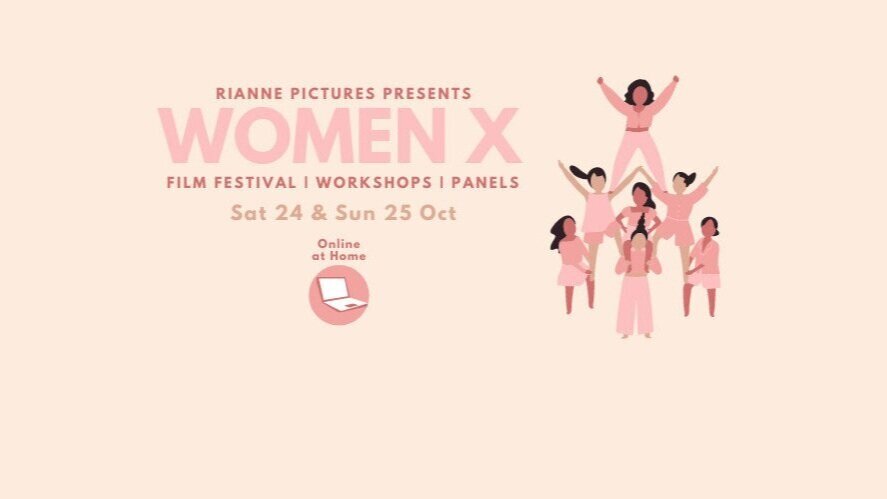Women X – A Look at Digital Festivals and Accessibility
Rianne PicturesAs anyone in the world should be aware of by now, the COVID-19 pandemic has affected countless events and the film industry is no different. Instead of pursuing cinema releases, many films have shifted to a digital format or have decided to delay their release until the virus somehow calms down. Film festivals have also been affected. Many have been cancelled or postponed, some have tried a hybrid format of mixing in-person and online screenings, and others have gone entirely digital.
Of course, this means that the festival landscape has changed dramatically in 2020 but going digital was also thought to be a good thing for accessibility. Sadly, for many larger festivals, accessibility was still the last thing on their mind. Geo-locking, capping ticket sales, a lack of subtitles and plenty of other elements have prevented digital festivals from being properly accessible. Recently, the BFI London Film Festival was criticized for not holding enough digital screenings outside of the workday, which inhibited the working-class from accessing their films. Accessibility does not end at adding captions and subtitles for D/deaf and hard of hearing folks, in fact, this bare minimum usually isn’t even met. It also means providing access to disadvantaged film fans, having longer screening windows and creating safe spaces for marginalised people.
So many of these festivals have been going on for decades, yet once they were finally given the opportunity to be accessible, they largely failed. Newer, smaller and independent film festivals have been picking up the slack, creating truly accessible festival alternatives whilst having little experience themselves. At the end of October 2020, a festival called Women X – an independent short film festival created by Rianne Pictures – turned out to be the most accessible of all. This was done entirely digitally, with a low budget and almost completely run by volunteers, proving that larger festivals should have no excuse in making their programmes more accessible given their experience and resources.
When most people think of accessibility and film, the first thought that comes to their minds is adding subtitles. Frankly, this is the bare minimum of what should be done to make films and festivals accessible, yet it is still too often forgotten about. It is a common experience for D/deaf people to have purchased a festival ticket or rented a film only to discover that there’s no subtitles, giving them no way to watch the film. This can be seen as downright cruel, as everybody should be given the opportunity to enjoy a film. At Women X, every short film was captioned. But the programming team took this even further, captioning Q&A sessions and workshop panels, and uploading them to their festival hub so that D/deaf people could enjoy all festival activities they’re too often excluded from.
Another way in which Women X championed accessibility was in the way it catered to working-class people. While their short films were split into themed programmes and screened at certain times, anyone could watch any film at any time over the weekend. And although the festival was only on Saturday and Sunday, ticket-holders could access the short films until Wednesday, giving people plenty of time to watch all 32 short films, attend panels and Q&A sessions. Too many festivals fail to give attendees a large enough viewing window, forcing those who have to work outside of their homes to miss certain day screenings, with no other way of watching these films. Another huge victory for Women X in how it was accessible to the working class was in its ticket pricing. At only £5 for a digital pass, a Women X ticket was a tiny fee that delivered so much more than the price of admission was seemingly worth. At such a low price, people like university students and those who were furloughed or lost their jobs due to COVID-19 could still attend, as this was a film festival without a huge financial burden.
The final way Women X went above and beyond in creating an accessible film festival was in its ability to create safe spaces for marginalized people. The aim of Women X was to highlight the work of women and non-binary filmmakers. Each and every one of the 32 short films was directed by a woman or a non-binary person. It is crucial to hear the female voice in film and still too often they are excluded, especially women of colour or those belonging to the LGBTQ+ community. Simply by having a festival dedicated to women in film, Women X created a safe space for women in film to gather and connect. They also had a great selection of films with women of colour and LGBTQ+ people, giving these communities a welcoming space as well. Every film was given trigger warnings in their descriptions, giving people who may be uncomfortable with certain topics the chance to decide for themselves if they could handle certain subject matter. They even combated the well-described feelings of festival burnout and fatigue with large viewing windows, and creating an online calm and creative space, filled with videos of relaxing activities like yoga or crafting.
Rianne Pictures and the team behind Women X managed to think of everything to make their festival as accessible as possible. It was truly an impressive feat considering it was entirely volunteer-run with a low budget, and it was their first year organizing a festival. Women X is, by far, one of the most accessible, diverse and fun film festivals of this year. The fact that such a small team was able to pull something like this off is nothing short of pure excellence. Big film festivals should be looking towards Women X and the Rianne Pictures team as the blueprint for running a digital festival. The organizers have proved that making a festival accessible really is not that difficult. If they can do it with all their hardships then everyone can.


